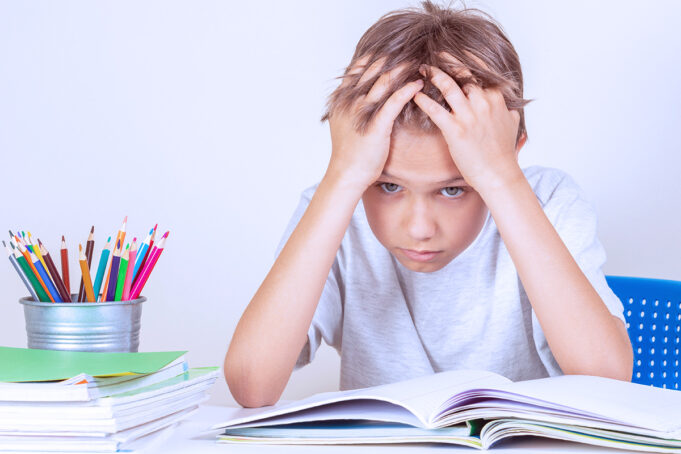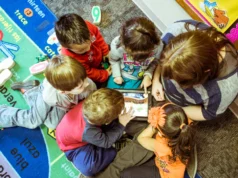An estimated 20% of the general population has dyslexia, making it one of the most common of all learning disorders. If this is the case, why do so few schools treat it as a learning disorder?
Many children who are struggling with dyslexia don’t receive a diagnosis right away. Sometimes, parents and teachers assume that they are simply struggling with reading and will catch up over the course of a regular curriculum.
However, dyslexia affects more than reading, alone. Plus, there are ways that children with dyslexia can thrive in a classroom setting when given the right tools.
What is dyslexia? Why is dyslexia a learning disorder? Keep reading here to find out.

What Is Dyslexia?
Dyslexia is a neuro-cognitive disorder that causes things like reading difficulties in individuals who typically are not otherwise learning challenged. It typically relates to issues with something called phonological processing.
Phonological processing is what allows us to decipher and make sense of individual sounds in language. When phonological processing is unaffected, children can learn how to sound out words while reading and have minimal trouble with pronunciation. However, issues with phonological processing can affect a person’s ability to read, speak, spell, and learn a second language.
How Does Dyslexia Affect Learning?
The Individuals with Disabilities Education Act (IDEA) requires all schools to provide accommodations for students who qualify for an Individualized Education Program (IEP). That means that some students with dyslexia may receive the education they need and deserve at their public school.
The problem is that not all children with dyslexia will qualify for an IEP. This means that many dyslexic students may be expected to keep up with the regular curriculum that is used to teach non-dyslexic students. This may present a number of problems for dyslexic students because of the many ways that dyslexia can affect learning.
What are the effects of dyslexia? Let’s take a look.

Dyslexia and Reading
As your child learns to read, you may notice certain difficulties that arise. These difficulties can impact a person’s ability to:
- Sound out words while reading
- Decipher the difference between two similar-looking or similar-sounding words
- Comprehend what they have read or what was read to them
- Solve word problems in math
When these difficulties are not accommodated, dyslexic students may fall behind in their reading levels.
Dyslexia and Speaking, Writing, and Spelling
Most people are aware that dyslexia can impact reading skills and comprehension. However, dyslexia can also impact a person’s ability to:
- Learn new words and use them in their own speech
- Find the words they’re looking for to express themselves
- Pronounce words correctly
- Express themselves in a linear or organized fashion
- Spell words properly
- Learn and implement the rules of grammar
- Write letters and other characters in the right order
- Write neatly and quickly
Some of these difficulties may not just impact a child’s experience in the classroom. Some children find that it can be more difficult to connect with others when they struggle to express themselves. An accommodating curriculum for dyslexic students can positively impact both their educational experience and their social skills.
Dyslexia and Focus
Some children with dyslexia exhibit symptoms that may be mistaken for symptoms of ADD or ADHD. This is because dyslexia can also affect things like:
- Understanding and/or following directions
- Remembering and repeating words or phrases in the right order
- Listening and taking notes at the same time
- Staying on topic
- Staying interested in a lesson, particularly one that involves reading or story-telling
Some dyslexic students may find that they are misunderstood by teachers and other adults. It may appear, at times, like they are misbehaving or acting up when, in reality, they need additional help staying on topic.

Signs That Your Child May Have Dyslexia
Many of the signs of dyslexia are self-evident and align with the effects we’ve discussed above. However, it is not uncommon for dyslexia to be mistaken for other learning or behavioral disorders.
For example, we mentioned that some dyslexic children may be falsely assumed to have ADD or ADHD. The key similarity is that both disorders can impact focus. However, dyslexia does not often cause symptoms like hyperactivity or impulse control, which may be present in children with ADD or ADHD.
It is also worth noting that dyslexia does not typically impact a child’s ability to excel in all subjects. For example, if your child is falling behind with reading and writing but excels in math and science, it is quite possible that they have dyslexia.
If you believe that your child is dyslexic, it is important to talk to your doctor. Receiving a diagnosis is the first step toward getting your child the educational accommodations they need. Early signs of dyslexia often include:
-
- Delayed speech
- Difficulty learning new words (including “every-day” words)
- Reversing sounds in words
- Mixing up words that have similar sounds
- Difficulty remembering the letters of the alphabet, the names of colors, and the order of numbers
-
- Difficulty with rhyming (which may be evident when trying to learn songs or nursery rhymes)
Starting with a curriculum designed for dyslexic students from a young age can help set your child up for success. In the end, all dyslexic students are fully capable of excelling in school, attending a university, and improving impacted skills.
Finding the Right Educational Program For Your Child’s Learning Disorder
Dyslexia doesn’t just make reading a little bit harder. Dyslexia is a learning disorder and should be treated as such by educators. That’s why we provide a number of lessons and learning styles that help students with dyslexia excel in school.















